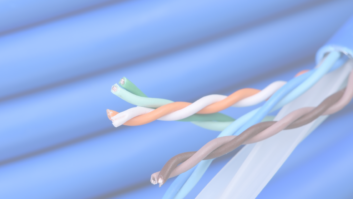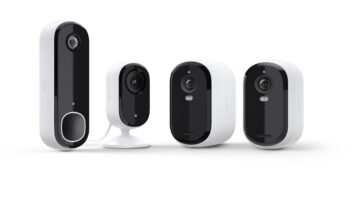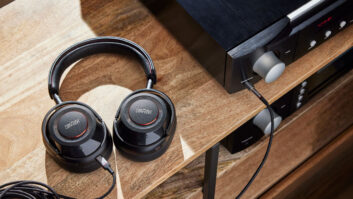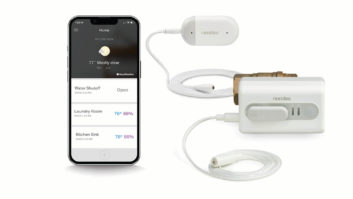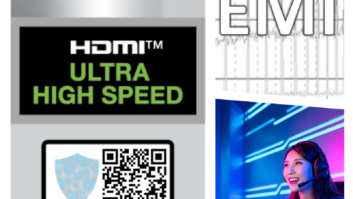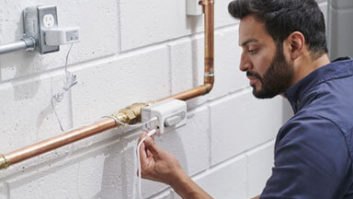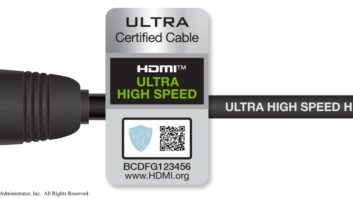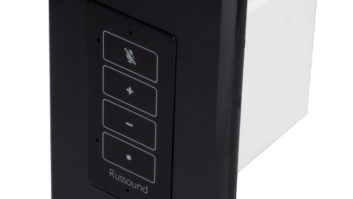Kimber cableBuzzwords rule in the consumer electronics world. Flat-screen, HDTV, and 1080p, have all been must-haves for consumers who love their AV gear and also love to up the ante with their friends and family. The most recent dance craze for gearheads is the quest for HDMI 1.3, Category 2. What almost no consumer understands about HDMI 1.3, however, is that despite the promise of millions of more colors, 7.1 Lossless PCM, Dolby Tru HD, and DTS Master Audio HD, the wire is only one part of the formula. Without a compatible source and display device, an HDMI 1.3, Category 2 cable is no better than a plain-old HDMI 1.0 cable that, frankly, still is not trusted by much of the custom installation channel. And in the CI world, where long cables lengths are often required, the quality is even more critical.
In a survey of several of the industrys leading wire and cable manufacturers, it is clear that the biggest challenge for them is clearing up misinformation about the HDMI 1.3 Version 2 standard as well as finding their own ways to manufacturer longer lengths of cable that can be certified.
Unfortunately, a growing number of consumers, seem to want HDMI 1.3, even though they dont know exactly what it is.
Anytime you have something that everyone wants but they dont really know what it is, its rife with both confusion as well as the opportunity to try to set the stage correctly, DVIGear president Steve Barlow said. A lot of time what I tell our resellers is that half of what we do is the products, but half involves using our expertise to communicate our knowledge to the customer in their language.
For the moment, unfortunately, what is promised in the HDMI 1.3, Category 2 specification, and the reality of what is currently available to integrators and consumers are two different things. This fact, and many other challenges have frustrated manufacturers of HDMI cable as they have raced to meet the demands of the market.
Manufacturer Challenges
The largest single challenge has been defining HDMI 1.3, itself, within the confines of the consumer market, said Joseph D. Cornwall, business development manager for Lastar Inc., Cables To Go. How will it be used? What idiosyncrasies will the increased bandwidth place on the real transfer of data within a home installation? What real, qualitative improvements will HDMI 1.3 provide and how will the end user perceive those improvements?
For many cable manufacturers, these questions simply have come too early, as consumers and the mass media jumped on HDMIs new spec as the next must-have in high-end electronics. In my opinion, the premature release of information about new HDMI advancements is the main issue, said Joe Perfito, president of Tributaries.
Keeping up with the evolving specifications and making sure products meet and/or exceed the HDMI spec is only half the battle for cable manufacturers. The other is properly communicating these capabilities to integrators and consumers.
The marketing message that accompanies these products can be difficult to address, said Raymond W. Griffin, director of sales and marketing for Kimber Kable. There are many companies boasting special features like the speed and refresh rates supported by their products. This has added further confusion, because speed is already a given in the HDMI 1.3 spec, and a cable has nothing to do with the refresh rate of a display device.
Vizionware cableFor Hagai Gefen, president and CEO of Gefen, simply meeting market demand has been difficult. Probably the biggest challenge we faced was a quick deployment of the solutions in time to meet market demand, but we already have several HDMI v1.3 solutions on the market and are in the midst of making many more available at this time, he said.
Tributaries Perfito and others have noted that because new HDMI specifications typically come before chipsets are actually made available to manufacturers, demand often hits before manufacturers are able to meet it.
The media picks up this new improvement and begins writing articles before any products are available, Perfito said. Consumers, upon reading the articles, begin asking for products that are made with this new 1.x release. Of course, those products are not yet in the pipeline. It gives the industry a black eye. Also, there are reliability issues with the first run of new chipsets. A number of companies have had many product failures with the first HDMI products.
Even when the chipsets are in hand, manufacturing to spec and testing the spec present even more hurdles that cable manufacturers must jump. Sometimes its as basic as finding the proper connector for your new cable design.
As the only American manufacturer of HDMI cable, our biggest challenge is and has been HDMI connectors, said Steve Lampen, multimedia technology manager for Belden, in Richmond, Indiana. They are simply unavailable in the USA. Our first customer for this cable, Blue Jeans Cable in Seattle, was forced to ship container loads of our cable to Chinese assembly houses just to get connectors put on.
And then there are the issues of cable performance in the face of higher bandwidth requirements and the longer lengths needed for professionally installed home theaters. Manufacturers agree that most HDMI cables at shorter lengths (less than five meters) can handle higher bandwidth demands of HDMI 1.3, Version 2 without much trouble. Longer runs, however, demand strict manufacturing standards and better testing.
One of the biggest challenges for HDMI 1.3 or HDMI in general is to create a cable or product with a large enough bandwidth to be able to pass the uncompressed digital signal over long lengths, said Brian Casagrande, senior product manager for the Path Group/ATS/IXOS. This is where cable manufacturing experience with extensive research and development come into play.
The most difficult issue facing Straight Wire president Steven Hill when developing HDMI 1.3 cables is how to cost effectively offer lengths of more than 30 feet that will give consistent performance with a wide range of sources. Most of the problems, he said, emanate from source components that have varying output levels, which are difficult for long cables to overcome. Occasionally, its the load or video display device that causes the trouble.
The most common issue today is EDID [extended display identification data] or HDCP [high-bandwidth digital copy protection] signal confirmation errors over long-run applications, Hill said. The signal must go from the source through the AV receiver or HDMI video distribution unit to the video display and then back to the AV receiver and finally back to the source. We have resolved issues of inter- and intrascew variances, advanced audio functions, eye tests, etc.but are still having random lock-ups when the HDCP signal (part of EDID) is not making a complete and consistent loop.
Testing is the Key
AudioQuest senior vice president of product development, Xiaozheng Lu, said that it is essential that each cable get tested with true high-speed data to insure that every cable his company sells meets the same high standard. HDMI cables can carry up to 10 Gbps data rate, which is three times the data rate of the fastest computer CPU, he explained. In addition, at times we need to send this data through very long cables. To make cables for such a high data rate, our HDMI cable manufacturing has to be ultra precise and use the best available materials.
Although manufacturer such as Gefen have found success certifying their cables through testing labs such as Simplay HD, most manufacturers have found that procedures for testing HDMI cable are somewhat vague and proper testing laboratories are few and far between.
Belden CableYou have to find these laboratories to get HDMI products certified, explained Monster Cable founder and president Noel Lee. Plus the amount of testing that needs to be done is quite extensive, so all of our products that we release have the performance level that we promote it to have, based on the proper engineering tests. However there are many people out there who promote HDMI 1.3, Category 2 capability or 1080p, full HD capability, but dont have the equipment to actually get the testing done, just like ourselves, and will put the HDMI 1.3, Category 2 certification on it, but without the proper backup, through testing.
Even with a testing lab available, in theory, testing HDMI 1.3, Category 2 cables without the availability of compatible source components and display devices makes the endeavor even more difficult for cable vendors.
The biggest challenges that arise are that most of todays products do not yet incorporate all of the newest features that the HDMI 1.3 standard encompasses, added Ben Jamison, vice president of sales and marketing for Vizionware. This presents challenges in the real world when testing components and cabling to ensure end-to-end link performance.
Cornwell of Cables to Go concurred that because there havent been any readily available players or displays that conformed 100 percent to the HDMI 1.3 protocol, it has been difficult to test cables. If we dont have access to actual production-level product, it becomes very difficult to predict exactly what interface issues might arise, he said. We can build to the theoretical standard, but that says very little about how a product will really work in the hands of someone who purchases it and has certain preconceived expectations. And then, once you have the hardware, what do you test it with? There needs to be a plethora of software as well as the gear used to play it in order to understandand as a manufacturer we must not only understand but predictthe markets expectations and demands.
Biggest Misconceptions
Monsters Lee said that the biggest misconception is that all HDMI cables are the same. To the contrary, Lee explained, higher performance, higher data-intensive sources and software, require higher performance HDMI cables.
DVI Gear cableSo one could have a perfectly operated home theater at 720p and then upgrade the component to 1080p from 8-bit color to 12-bit color, and the cable will stop working; the picture will not sync, he said. Sometimes youll get dots, and sometimes youll get flickering screens or maybe no picture at all. The installer may think its a problem in the components, but its actually the capability of the cable to carry the bandwidth thats required.
Beldens multimedia technology manager, Steve Lampen, noted that another misconception is that the retail price of an HDMI cable is a proper indicator of quality. While cables can certainly be divided into bad-good-better performance, the difference is more in each offshore factorys ability to control processes, and to consistently make good cable, he said. There seems to be no clear connection between price and performance. Therefore, the savvy end-user will compare cables based on performance.
At CES, AudioQuests Lu presented findings from his companys white paper and provided a live demonstration proving that theres actually a huge differences between good and bad cables. The budget cable may appear to be fine with certain signals at a certain length; but when the signal data rate increases, it can fail completely. This is especially troublesome if these HDMI cables are installed inside walls.
Its very important to future proof the cables, Lu said. As explained in my white paper, the maximum data rate a given cable can handle depends on the cable quality and the cable length. When the signal data rate doubles, the maximum cable length is cut in half. Some manufacturers rate all the HDMI cables in a given level with the same speed (or data rate), which clearly is not scientifically correct.
The eye pattern test (visit www.resmagonline. com/eyepattern for more) is gaining a lot of traction with many manufacturers who want to guarantee longer lengths of HDMI cable. Although it can, in fact, reveal limitations of certain cables based on wire gauge and length, Tributaries Perfito finds it unreliable. The major difficulty with the eye-pattern test is that only one or two cables from a manufacturer are tested, he explained. It would be impossibly expensive and time-consuming for every cable to undergo that test. Therefore, for the vast majority of cables that are sold, very little if any testing has been done. The important fact here is to purchase cables from a trusted source. Tributaries visually tests every HDMI cable using a Blu-ray DVD player and a native 1080p display.
Ixos cableBut, again, its not just the cable that has to perform. Perhaps the most often misunderstood element of the HDMI 1.3 Category 2 story is that all 1.3-certified cables enable access to higher signal speeds, Deep Color capabilities, x.v.Color features, and new HD lossless audio formats. Kimber Kables Griffin reminds integrators that it is the source, HDMI repeater/processor, and display that must be in alignment with the cable, if these new features are to work. Our HDMI cable did not have to change at all when it came time to be certified 1.3. My display, Blu-ray DVD player and HD-DVD players did have to be updated, he said.
Acknowledging that all manufacturers are not maintaining adequate tolerances and quality control for each component they manufacturer, Straightwires Hill also noted that industry professionals still must recognize that components with varying and poor power supplies, poor application of certified HDMI chipsets, and other factors are just as much to blame in some installations as the cable. Couple that with six generational changes in the HDMI specifications over three years (intended to be forward and backward compatible) and you can have some issues, he added.
Finally, even if a component or cable is certified as HDMI 1.3, it does not mean that it features every capability in the spec. In reality, each new HDMI 1.3, Version 2 feature is optional for inclusion in various products, and only one of the key features of 1.3 has to be implemented to claim 1.3 compatibility. This leads to a great deal of confusion by installers and end users alike, said Vizionwares Jamison. To reduce this confusion, several manufacturers have already begun to specify each of the individual features of 1.3 that have been incorporated into a product. HDMI Licensing has also mandated that in the future, specific features must be included on the packaging and collateral used in selling HDMI products in order to provide more concrete information about each products capabilities.
Advice for Professional Integrators
Reading that a cable is HDMI 1.3 is not enough to insure a proper installation, agreed DVI Gears Barlow. The important information, he said, is a speed rating. Get into specs enough to say, What speed do you guarantee you can do at what lengths? Because the higher the speed, the longer the length, the more difficult it is. Its important to understand the relationship between resolution, color bit-map, and how those things impact the speed; and, then how the cable is influenced by these speeds and what the technical parameters are.
Straight Wire cableCables to Gos Cornwall said the process is even tougher for integrators because HDMI LLC wont even allow cables or hardware to be labeled as 1.3 or 1.2a, etc. Therefore, his advice is to look for an interconnect that uses quality shielding. Triple shielding can make a big difference, he said. And also look at conductor size and buy the heaviest conductors possible, because the performance of an HDMI interconnect over distance is directly affected by voltage drop and losses within the cable. Finally, look for a cable that offers a solid guarantee and a source for assistance in overcoming compatibility issues.
Its not helpful to buy cheap if it doesnt work, Cornwall added. Its better to invest in real performance and assurances of continued performance. In the long run, that will provide greater satisfaction for the end user, better return on investment for the integrator, and improve the overall health of the market segment.
And again, seek out verification, if possible. I would look for a third-party certification like the Simplay HD, Gefen said. Thats why Gefen supports the testing. It proves our cables are high quality and reliable for high-definition performance.
AudioQuests Lu reminds integrators to read the fine print of how these cables are tested and rated. For example, some manufacturers only test short (two-meter cable) in a given family and rate the entire family based on the two-meter cable, he said. Also look for plugs with thick gold plating. Some low-cost cables only have gold flash (a very thin coating) on the plug that can be rubbed off after several insertions. Also look for the proper UL rating, like CL3 rating…necessary for in-wall installation.
And if budget or lack of supply does not allow purchase of certified long lengths, its time to find a good HDMI repeater/equalizer, noted Kimber Kables Griffin, who just so happens to be developing such a product for his company.
Others may look to active cables for a solution. DVI Gears Barlow acknowledged the advantage to taking this approach, but reminds integrators to avoid installing active cables behind walls or ceilings, where they arent easily replaceable. Instead, he encourages the use of active cables using passive copper wiring and electronics in the connector. This way theres a field-replaceable upgrade path and the electronics can be easily replaced if zapped by an ESD [electrostatic discharge].
Jeremy J. Glowacki is editorial director of Residential Systems in Carmel, Indiana.






